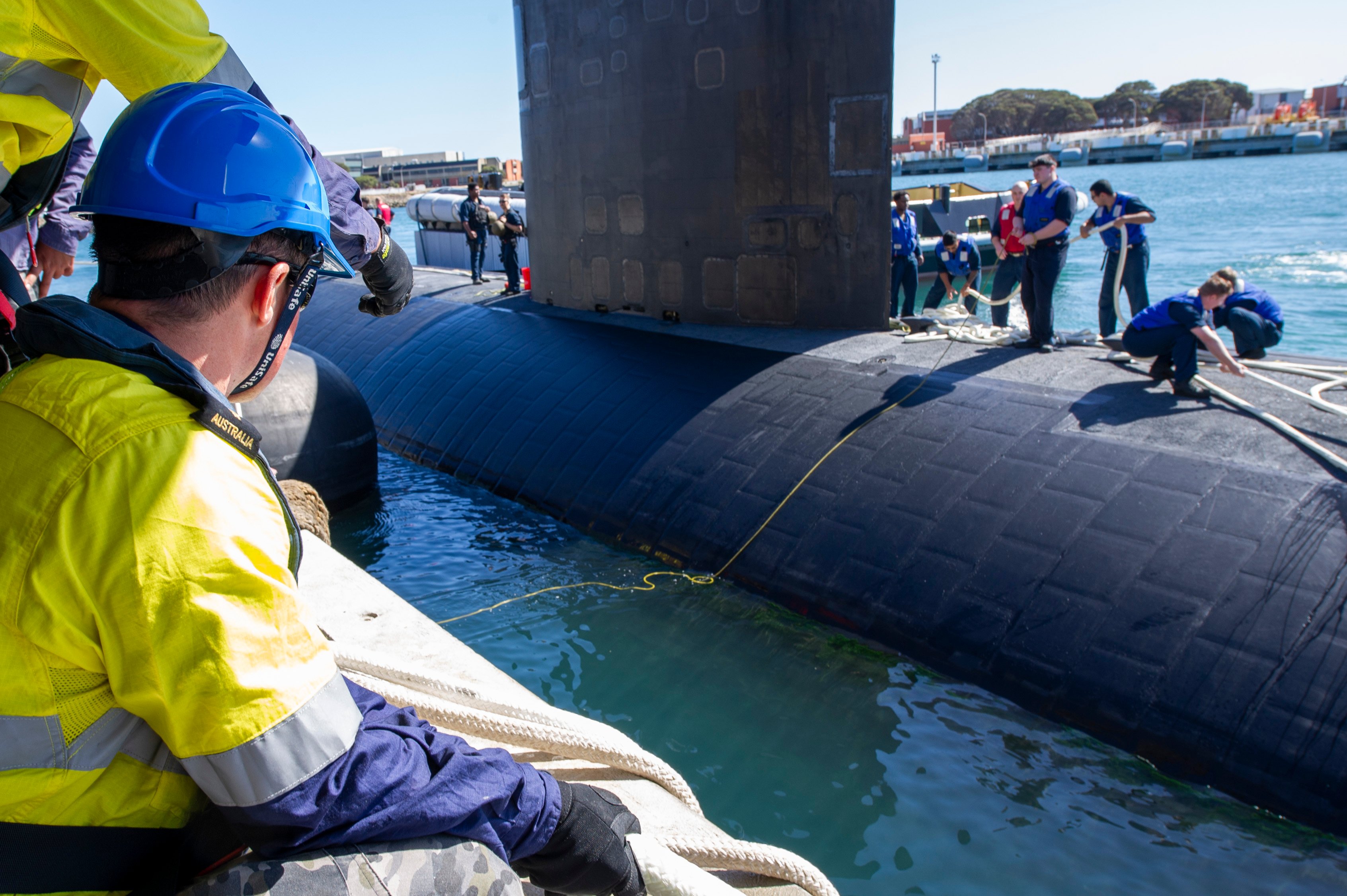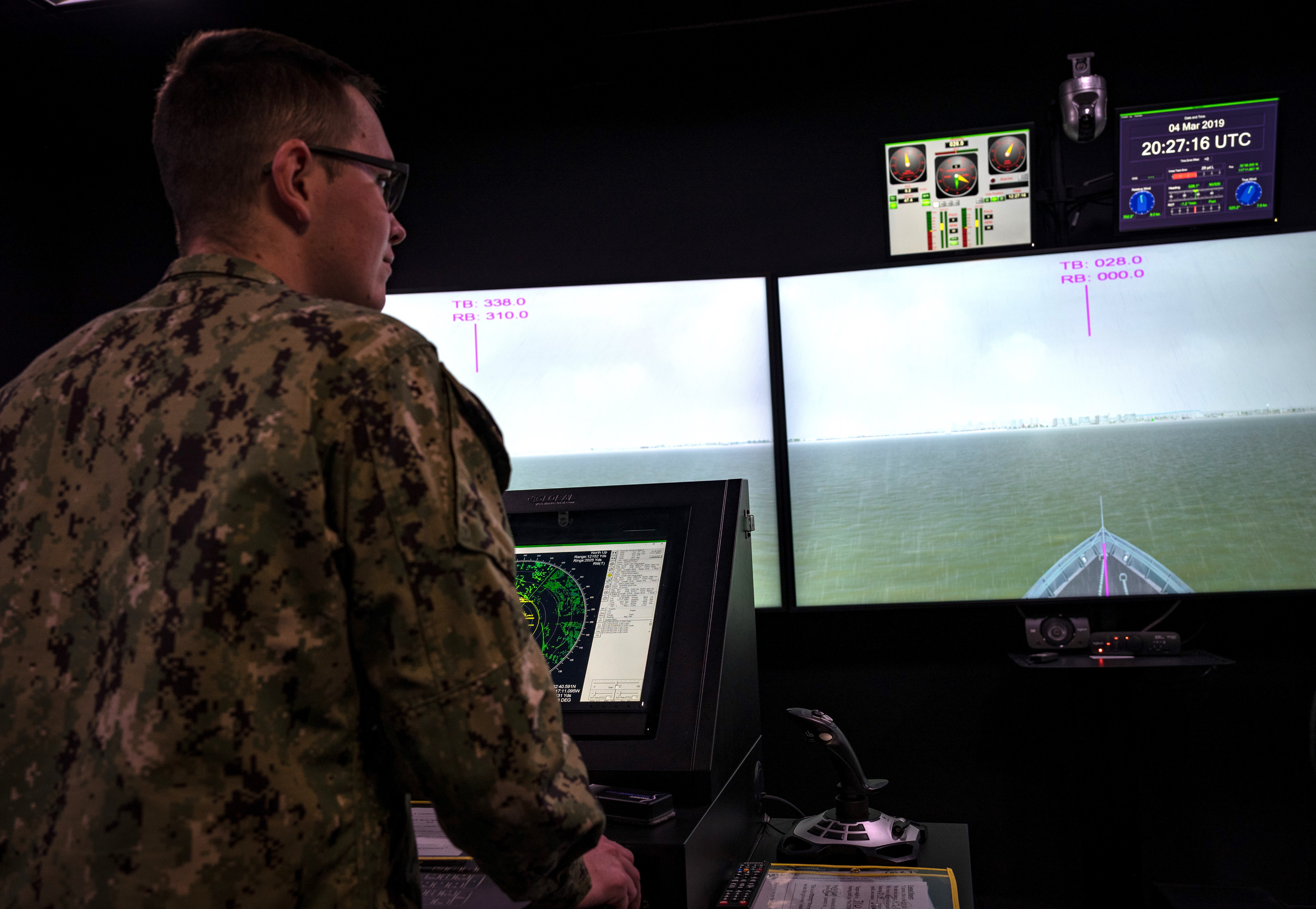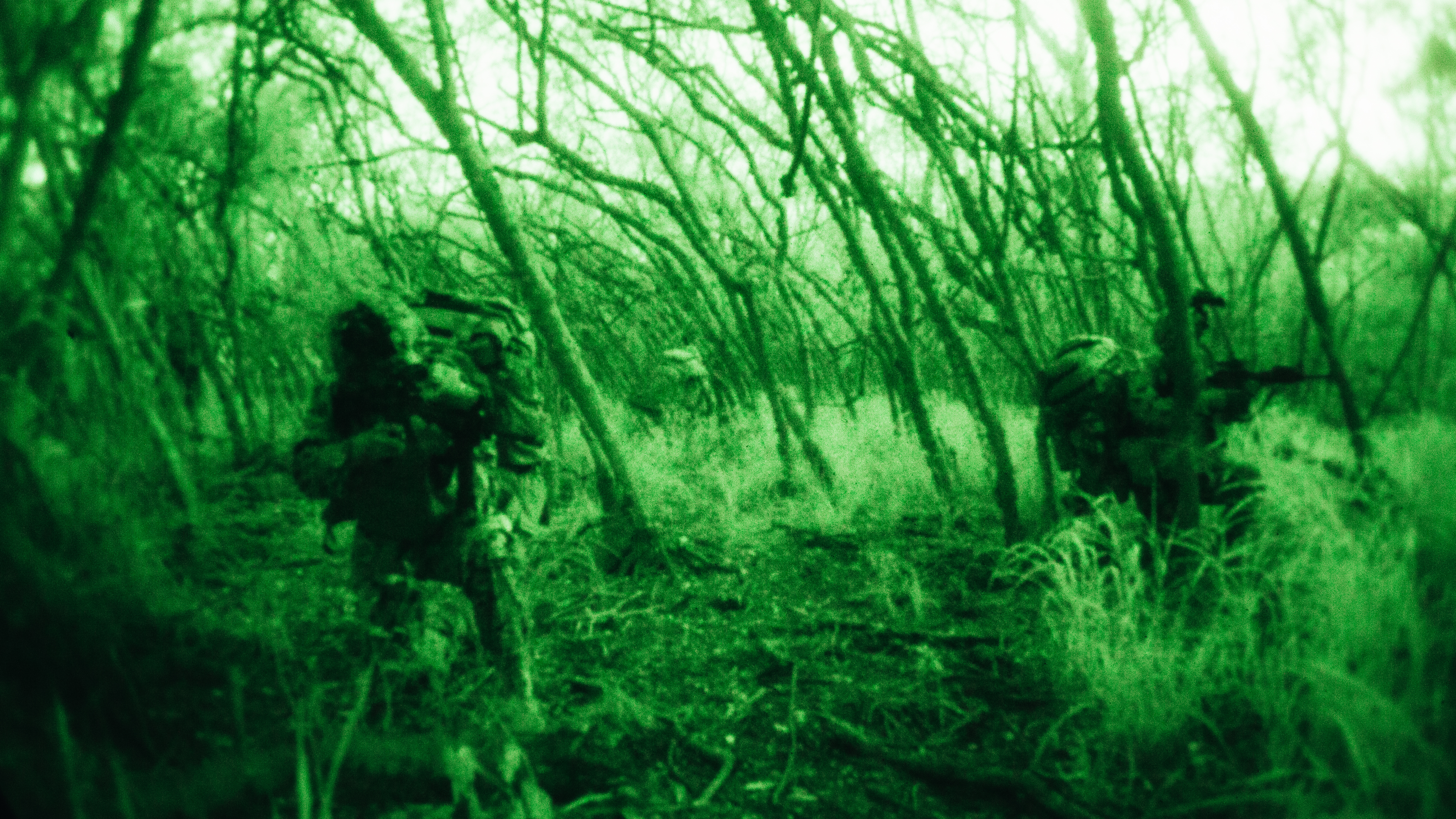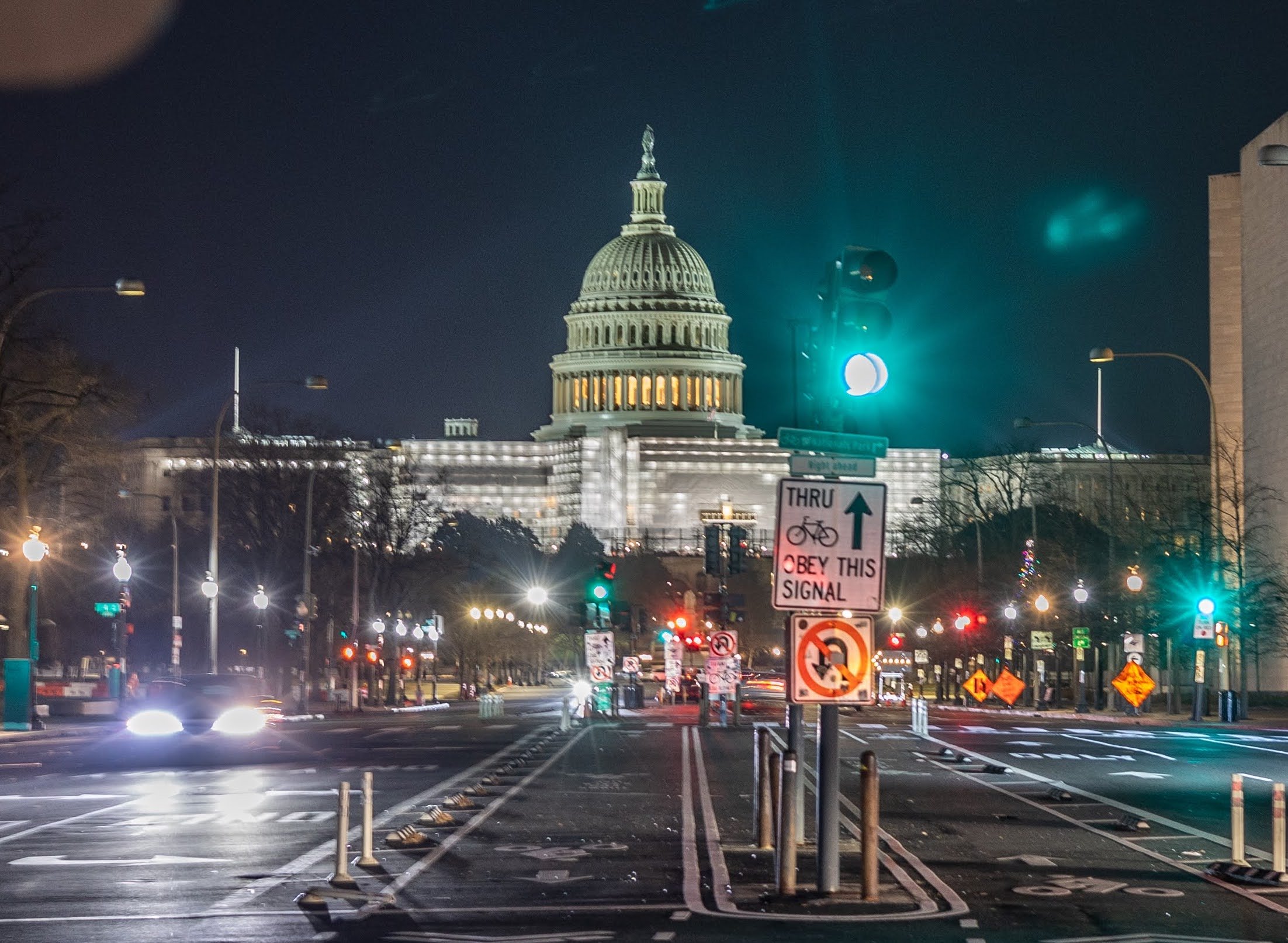
NATIONAL HARBOR, Md. – According to the commander of U.S. submarine forces, the Australian-United Kingdom-United States agreement means “more subs forward” to deter Chinese territorial ambitions in the Indo-Pacific.
Speaking Monday at the Navy League 2024 Sea-Air-Space exposition, Vice Adm. Robert Goucher didn’t see the agreement leading to a drop in the availability of long-range, nuclear-powered submarines required in those waters when the allies’ numbers are counted in addition to the United States.
This “great capacity … is a game changer” when it comes to security in the Indo-Pacific, the U.K.’s Vice Adm. Martin Connell, Second Sea Lord, added.
The Navy has 49 nuclear-powered attack submarines in the fleet against a requirement of 66.
Under the AUKUS agreement, Australia would buy three Virginia-class submarines as a bridge until Canberra builds its own. General Dynamics Electric Boat and Huntington Ingalls Newport News Shipbuilding have yet to meet the Navy’s delivery targets of two Virginia-class subs per year, raising questions on Capitol Hill about the agreement’s effect on U.S. security.
The two shipyards are delivering 1.3 boats annually. The Navy’s budget request for Fiscal Year 2025 only calls for one new Virginia hull.
Electric Boat and Newport News team to build both Virginia and Columbia class submarines.
Goucher cited other benefits of the AUKUS pact, including enhanced “surge capacity” if a crisis threatens to erupt into conflict, increased interoperability among the allies’ submarine fleets and modernization and expansion of the domestic submarine industrial bases in all three nations.
Australia has six conventionally-powered submarines in service.
Connell saw in the agreement’s Pillar 1, Australia eventually having its own nuclear-powered submarine fleet, the opportunity for greater information-sharing among the three. He also said learning from each other’s shipyard practices could benefit the partners and how they apply to technology different tasks.
“It has been a challenge,” Pat Conroy, Australia’s minister for defense industry, said, but there has been important movement since the agreement was announced in September 2021. He mentioned Australian naval officers in U.S. propulsion school and deploying on operations as important early steps.
During the session, the panelists cited major projects already under: the $4.9 billion contract London awarded to BAE and Babcock to build the first “SSN AUKUS” submarines and Rolls Royce to build their reactors; and Canberra’s commitment to spend $4.6 billion to ready its uniformed and civilian workforces, build shipyard infrastructure in Adelaide and upgrade its submarine base at Stirling to homeport and maintain and repair U.S. and Australian Virginia-class subs.
Additional funds for submarine industrial base modernization top the Navy’s list of unfunded requirements for the coming year.
Goucher and the others said the process leading to Canberra building its own nuclear-powered submarine is “conditioned based.” He compared it to steps to receive a driver’s license, “starting with the learning permit”.
For starters on the civilian side, Conroy said Australia needs to be conducting nuclear submarine maintenance and has sent its shipyard workers to the United Kingdom and the United States to learn what has worked for them in 70 years of building and maintaining these submarines.
“It can be a great learning environment,” Connell added. “I think that’s a significant opportunity.”
Goucher said the learning will follow the rigorous procedures established by Vice Adm. Hyman Rickover as the Navy entered the nuclear era.
Under current timelines, Australia would have a U.S. manufactured submarine they can operate in the early 2030s. Goucher added, “if there’s a problem they can phone home.”
He and Connell said if there’s a slip in some part of the program, there could be advances ahead of schedule to keep the program moving.
Connell said the design phase for the new submarine “is relatively mature,” but “it is really important [the Australians] get comfortable” with the final product.
The key to success in the industrial base, the panelists agreed, is recruiting, training and retaining a greatly expanded workforce. Connell said the United Kingdom’s shipyard workforce of 11,000 was expected to add about 5,500 and Rolls Royce’s 4,000 employees dedicated to its nuclear work will double.
The steps being taken now, such as the $11.7 billion already earmarked for the submarine industrial base, the submarine shipyard is the improvement “is the best investment we make short and long term.
“There are things we have to do now to have submarines in the water by 2042,” Conroy said.





